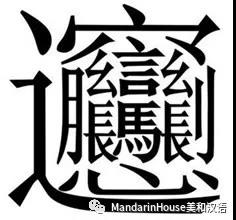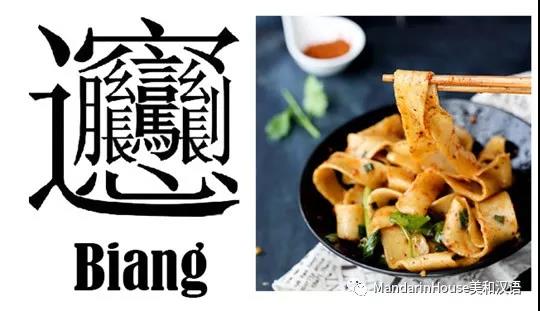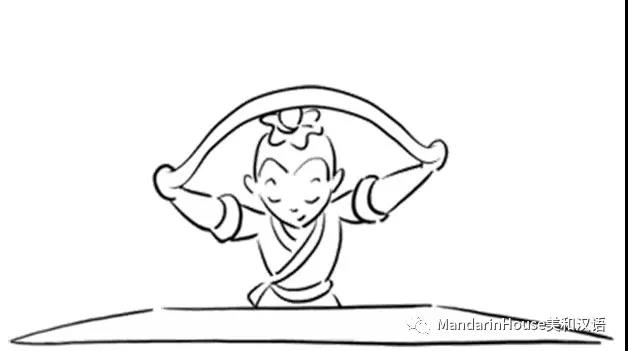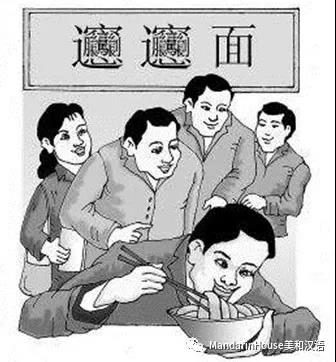
Chinese characters are made up of strokes. Learning to write them involves not only learning where all the strokes go, but also the order in which they are supposed to be written and the direction of each individual stroke.
Today we are going to learn one of most complex Chinese characters biáng. This character occurs in the written form of biáng biáng miàn, or biáng biáng noodles, a dish of wide and flat noodles that popular in the Shaanxi province.

There are 52 strokes in total in this simplified Chinese character, and 62 in the traditional Chinese character. It contains 5 simple characters [马] horse, [月] moon, [长] long, [心] heart and [言] word, and also 4 radicals such as [刂] knife, [穴] cave. In fact, nowadays biáng cannot be found in any modern Chinese dictionaries.
Background history

The origin of this Chinese character is still uncertain. Generally, the character biáng was invented by an unknown Chinese Scholar in the Ming and Qing dynasty in the noodles restaurant.
The time period cannot be told. It was only mentioned that there was a poor young Chinese Scholar going to Xianyang city in Shaanxi. When he passed by a noodle restaurant at lunchtime, he heard something sounds like biáng biáng made by the noodle chef (the sound of noodles slapping on the table). He suddenly felt hungry and went inside the restaurant.

In the restaurant, the Chinese Scholar saw the noodle dish served with yellow, green and white ingredients, smelt very tasty that he was so excited and ordered one. After he finished eating the noodles, he realized that he had no money to pay the bill. Then he asked the chef: What is the name of this noodles? Biáng biáng mian the chef replied. After that the Chinese Scholar asked him how do you write biáng? The chef cannot answer his question as he never thought about this before.
The Chinese Scholar continue to say: Let me write the character for you then my noodles are for free? He didn’t give the chef any chance to say no, he began to grab some papers and quickly wrote a character. This was such a complicated Chinese character that everyone in the restaurant was speechless and amazed at its complicated combinations.
The noodles chef was grinning widely, and gave him the noodles for free.
Though it is a complex Chinese character, biáng symbolizes the difficulty of accommodating the Chinese traditional folk, local cultures and languages that became the standard of Chinese wriing system, which represent the elite culture of China.


